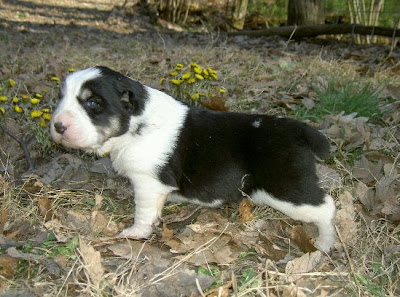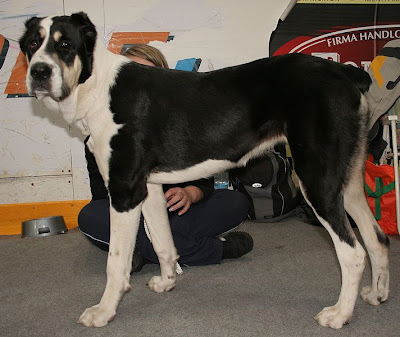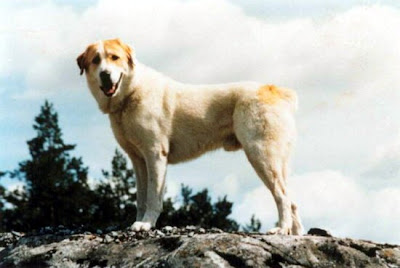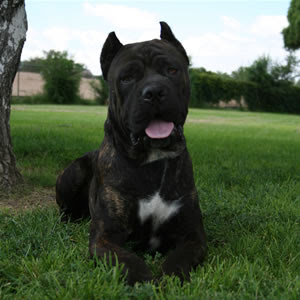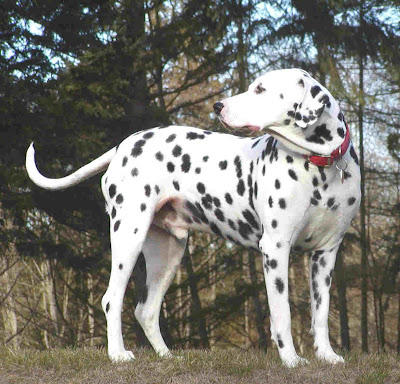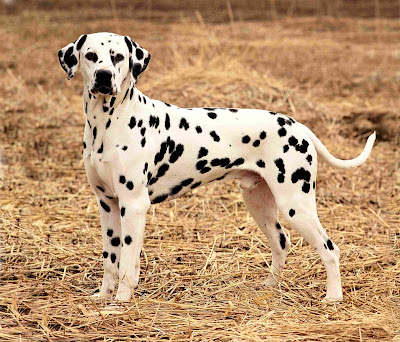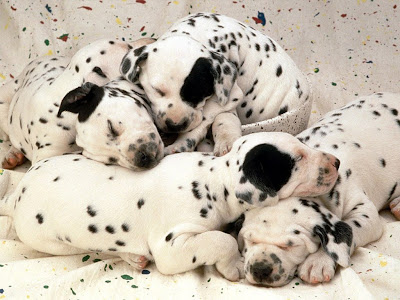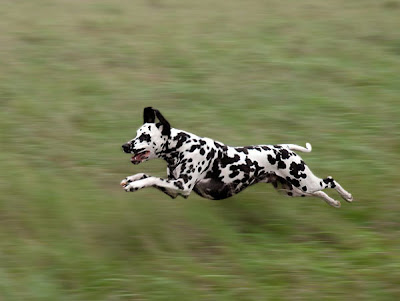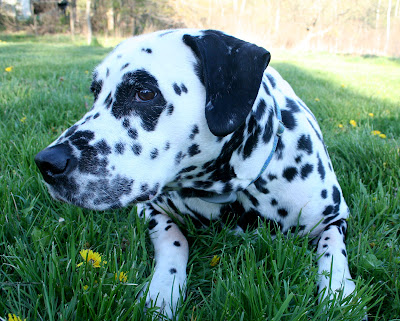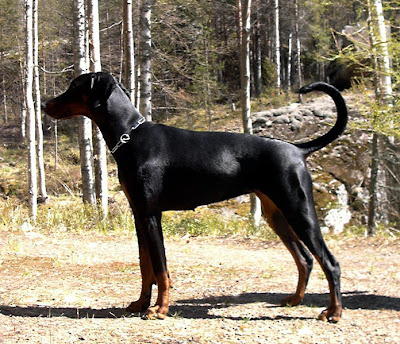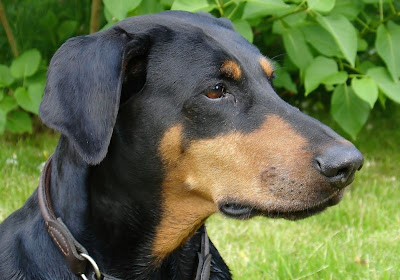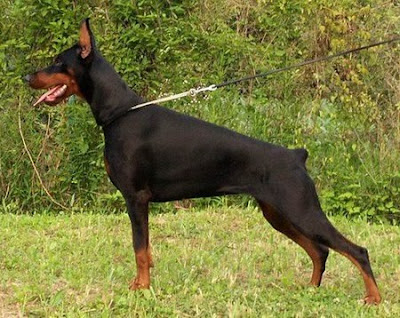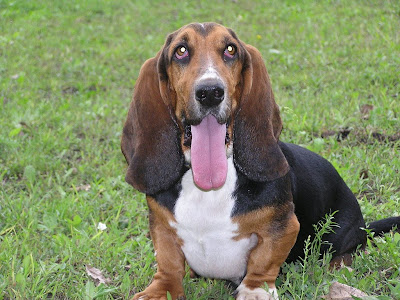Our pets soon become our extended family members and when a cat or dog goes missing, the trauma and stress involved is immense. Not knowing where to look and what to do to when your pet is lost is frustrating and not tracking them down in those all-important first few hours of being missing can even be fatal. However, thanks to the new wave of GPS pet-tracking devices, tracking and recovering your lost pets has become a whole lot simpler.
.
Basically, A-GPS Pet Tracking system uses the same assisted global positioning satellite (A-GPS) technology that we use in our automobiles today. A transmitter is attached to the dog's collar and once activated, informs the owner of the pet's location through email or text alerts. Some devices allow you to pre-program designated safe spots such as your home or backyard, and when your dog leaves these areas you are immediately informed of the same, thus saving precious time in tracking the pet down. Since it uses GPS technology, you would be able to receive not only the location of your missing pet, but also instructions and directions on how to get there.
.
.
.
.
Some pet tracking devices are associated with a recovery center that is alerted once the animal goes missing and in this way, a combination of efforts take place for the tracking and recovery of your lost pet. The device is fitted with a bright LED beacon that is visible from over 100 yards, which is especially useful when your dog goes missing at night. Unlike some other devices on the market, you do not need to replace the entire device when the battery no longer works, as it is easily removable and comes with a rechargeable battery.
.
SpotLight is one of the smallest GPS devices available on the market today, is water resistant and built to last. Using the latest technology and Google Maps, pet owners can now track and find their missing pets in no time.
.
SpotLight is the next step in providing recovery services for your pets. It offers total peace of mind since your dog is always being monitored, no matter where you are. You can now relax knowing that you are always connected to your pet and that they are safe. Most competitors offer dog tags, call centers, tattoos, microchips or just tracking capabilities. However, SpotLight is a dedicated 24 hour, year round service. Created and developed in conjunction with the American Kennel Club Companion Animal Recovery (AKC CAR) team to reduce the number of lost dogs, buying a SpotLight GPS Pet Locator includes an exclusive AKC CAR collar tag with unique ID number that includes Lifetime enrollment in AKC CAR's Recovery Service as well. The rescue button on the device connects you with your lost dog and a trained recovery team as part of the service. Thanks to the 24/7 AKC CAR helpline, there is always someone there to watch and help if your dog is missing.
.
As a pet owner, there can be nothing more important than the safety and security of your pet. To prevent your dog from running away and increasing the risk of an accident or being stolen, A GPS dog collar such as the SpotLight GPS Pet Locator is a worthwhile investment. Such a device can save you not just a lot of time and heartache but also help reduce the number of stray dogs on the streets and in the shelters as a result of effective recovery.
.
This article is Co-authored by Christopher Newton & Lewis Sheats, from Positioning Animals Worldwide, Inc. For more information about GPS Pet Tracking System, visit http://www.spotlightgps.com/spotlight-gps-pet-locator.aspx.
Article Source: http://EzineArticles.com/?expert=Lewis_Sheats
Wednesday, March 31, 2010
Catahoula Bulldog
The Catahoula Bulldog is a crossbred (not a purebred dog); it is a cross between the Catahoula Leopard Dog and the American Bulldog for a specific purpose. (Al Walker of Animal Research Foundation states: The Catahoula Bulldog is recognized as 50% Catahoula Leopard and 50% American Bulldog in the first generation cross. In succeeding generations it may be 75%-25% mix in either direction.The 75%-25% cross should not be exceeded to maintain the desirable characteristics of each breed.
.
The Catahoula Bulldog is a medium to large size dog weighing in at 34-45.3 Kg (75-100 lbs). The height is 55-66 cm (24-26 inches) at the shoulders.
.
The dog has the American Bulldog's muscular build with tight skin and a very short smooth coat. Normally it does not have an undercoat but usually develops one when living in seasonal or colder climate.[1] Catahoula Bulldogs come in a wide variety of colors due to the Catahoula Leopard genes. Both pure white and merled coats white with grey, black and tan patches and blotches; some have very large areas of color and smaller patches and spots are common.
.
The eyes can be a soft to dark brown, amber, ice blue, emerald green, gold or any combination of all of these including heterochromia. Ears can be a rose type to button over and are sometimes cropped. The Catahoula Bulldog tends to use the ears in a very expressive manner.
They can be white, black and white, black, brown, brown and white and sometimes even black and brown.
.
A red/tan female Catahoula Bulldog 75% Catahoula Leopard and 25% American Bulldog
.
The tail can be long or a natural bobtail.
.
Though utilized as a hunting, working, and guard dog, the Catahoula Bulldog makes an excellent companion. They are loyal and devoted to their people and have strong protective instincts; they are generally calm though also alert to its surroundings.



.

The Catahoula Bulldog is a medium to large size dog weighing in at 34-45.3 Kg (75-100 lbs). The height is 55-66 cm (24-26 inches) at the shoulders.
.
The dog has the American Bulldog's muscular build with tight skin and a very short smooth coat. Normally it does not have an undercoat but usually develops one when living in seasonal or colder climate.[1] Catahoula Bulldogs come in a wide variety of colors due to the Catahoula Leopard genes. Both pure white and merled coats white with grey, black and tan patches and blotches; some have very large areas of color and smaller patches and spots are common.
.
The eyes can be a soft to dark brown, amber, ice blue, emerald green, gold or any combination of all of these including heterochromia. Ears can be a rose type to button over and are sometimes cropped. The Catahoula Bulldog tends to use the ears in a very expressive manner.
They can be white, black and white, black, brown, brown and white and sometimes even black and brown.
.
A red/tan female Catahoula Bulldog 75% Catahoula Leopard and 25% American Bulldog
.
The tail can be long or a natural bobtail.
.
Though utilized as a hunting, working, and guard dog, the Catahoula Bulldog makes an excellent companion. They are loyal and devoted to their people and have strong protective instincts; they are generally calm though also alert to its surroundings.
.
.
.

.
.
.

.
.
.

Tuesday, March 30, 2010
Tibetan Mastiff
The Tibetan Mastiff, also known as the Do-Khyi or Tsang-khyi, is an ancient breed which descended from large Chinese dogs in the second millennium B.C. It may have arrived in Asia with the armies of Attila the Hun or Genghis Khan. The Tibetan Mastiff is an influential breed, thought to be an ancestor of the Saint Bernard, Newfoundland, Pug, and others. Its original function was as a guardian for sheep flocks, monasteries, and entire villages. Marco Polo met some Tibetan Mastiffs on his trips throughout Asia, describing them as ‘tall as a donkey with a voice as powerful as that of a lion.’ The Tibetan Mastiff was unknown outside of Tibet until 1847, when Queen Victoria received one as a gift from the Viceroy of India. Tibetan Mastiffs became endangered in their native country in 1959 when China invaded Tibet. Two Tibetan Mastiffs were delivered to President Eisenhower by the Dalai Lama as a preservation effort, but they did not successfully produce any breeding lines. Larger numbers of Tibetan Mastiffs were finally imported to the U.S. and Europe from India and Nepal in the 1970’s. The Tibetan Mastiff was accepted under the American Kennel Club’s Miscellaneous category in 2005. It is still somewhat rare, but breeders are successfully increasing the Tibetan Mastiff’s number through selective crossbreeding of international stock.
.
Life Expectancy Unlike most large breeds, its life expectancy is long, some 10-14 years. The breed has fewer genetic health problems than many breeds, but cases can be found of hypothyroidism, entropion, ectropion, skin problems including allergies, autoimmune problems including demodex, missing teeth, malocclusion (overbite or underbite), cardiac problems, epilepsy, progressive retinal atrophy (PRA), cataract, and small ear canals with a tendency for infection. As with most large breeds, some will suffer with elbow or hip dysplasia, although this has not been a major problem in the Tibetan Mastiff. Another concern includes canine inherited demyelinative neuropathy (CIDN), a rare inherited neural disease that appeared in one bloodline in the early 1980s.
.
Canine Hip Dysplasia (CHD) takes many forms, e.g., the femoral head ("ball") may not fit well into the acetabulum ("socket"); the ligament connecting the two may be lax, allowing dislocation; there may be no femoral head at all. Not all forms cause clinical signs. Very active, well-muscled dogs with no femoral heads may show no impairment. Their owners may be unaware of their dogs' "hip dysplasia" unless/until there is a reason to x-ray the hips.
.
As with all dog breeds, hip dysplasia is caused by the interaction of genes and environment. Inheritance of CHD appears to be polygenic, i.e., it is caused by more than one gene. Mode of inheritance (dominant, recessive, dominant with incomplete penetrance, etc.)has not been determined but may be different in different breeds. Rapid growth and weight gain in puppies may trigger or exacerbate a genetic tendency to all sorts of skeletal problems. Many TM breeders recommend against feeding "puppy food" and especially against feeding "large-breed" puppy food, as these concoctions may contain too many calories, leading to fat puppies. Some breeders and owners believe that supplementation with Vitamin C may prevent the development of CHD even in dogs with the genes for it.
.
Canine Inherited Demyelinative Neuropathy is an inherited condition that appeared in one of the prominent lines of Tibetan Mastiffs in the early 1980s. CIDN afffect the peripheral nervous system. Nerve fibers are unable to transmit impulses from the spinal cord to the muscles because of the breakdown of the myelin sheath. Starting at approximately six weeks of age, affected pups begin to lose the ability to walk or even stand. Progression of the condition can take anywhere from a few days to two weeks. Information from "The Tibetan Mastiff" by Ann Rohrer and Cathy J. Flamholtz
.
Because this condition is inherited as a simple autosomal recessive, it is virtually impossible to completely eliminate it from the gene pool. One known carrier was bred to over 30 times, producing at least 134 direct descendants. Many descendants of this dog are still being bred so there is always the risk - however slim - of producing more affected puppies. Breeders need to be cautious about pairing up any two descendants of this dog...
.
Hypothyroidism is fairly common in Tibetan Mastiffs, as it is in many large "Northern" breeds. TMs should be tested periodically throughout their lives using a complete thyroid "panel". (Simple T2/T4 testing is virtually useless...) However, because the standard thyroid levels were established using domestic dog breeds, test results must be considered in the context of what is "normal" for the breed, not what is normal across all breeds. Many TMs will have "low" thyroid values but no clinical symptoms. Vets - and owners - differ on the relative merits of medicating dogs who "test low" but are completely asymptomatic. Some researchers think that asymptomatic hypothyroidism may have been adaptive in the regions of origin for many breeds, since less nutrition is required for the dog to stay in good condition. Therefore, attempts to eliminate "low thyroid" dogs from the TM gene pool may have unintended consequences for the breed.
.
In affected dogs, symptoms may include decreased activity and playing, increased sleeping, weight gain, poor skin and coat condition such as flaking and scaling, a "yeasty" smell to the coat, frequent ear infections, and negative changes in temperament. Fortunately, this condition is easily treated by the use of daily thyroid supplementation.
.
Osteochondritis Dessicans is a skeletal defect in which the cartilage lifts off the bone, becomes thickened and cracked, causes inflammation and pain, and in severe cases degeneration of the joint. This conditions strikes males more than females. Keeping an affected puppy lean may help but surgery may be required to relieve pain.
.
Panosteitis is inflammation of the bones that strikes young dogs. The animal will become lame in one leg and then the inflammation will shift to a different leg. This is one condition that corrects itself over time, and only pain medication is needed.
.
Hypertrophic Osteodystrophy (HOD) is a condition that affects young large breed dogs. It is very painful and prognosis is fair to poor due to recurring episodes of the condition. Clinical signs of HOD include fever, lack of appetite, and depression. Lameness may vary from mild to severe. With multiple limbs affected, the dog may be reluctant to stand or walk. HOD may be mistaken for Panosteitis without proper diagnosis.
.
Treatment is only supportive. Intravenous fluids are usually required to keep the patient hydrated. Nutritional support is provided with a feeding tube if the dog refuses to eat for five or more days. Pain is controlled with narcotics and NSAIDs. Antibiotics are used if the dog has signs of pneumonia or other bacterial infections. If the bones become twisted due to growth plate damage, corrective surgery may be indicated. Because the distemper vaccination has been implicated, inoculation should be delayed until the pet has been in remission for a couple of months. Information from http://www.vetsurgerycentral.com/hod.htm
.
Ear Infections can be serious and the dog should be taken to the vet if you see it shaking its head or scratching more than normal. Tibetan Mastiffs have pendant ears, making them more prone to ear infections. The vet needs to determine the cause, and may prescribe antibiotics and/or ear drops. Some ear infections are contagious to other dogs if they involve mites or some bacteria.
.
.
.
.
Tibetan Mastiff Dog Club Directory
.
- A non-profit organization established for the protection and preservation of the Tibetan Mastiff in the United States. Breed and club information can be found along with many pictures.
- Tibetan mastiff kennel from Hungary.
- Breeder from Great Britain, introducing the dogs with pictures and pedigree information.
- Breeder of Quality Tibetan Mastiffs in Illinois USA.
- Raising dogs for guarding livestock. Photographs and training tips. Galva, Illinois.
- Introducing the dogs with pictures, showresults and breeding news. Located in Czech Republic.
- Pictures, pedigrees, show results, and litter announcements. India.
- Seng Khri Tibet Mastiff Kennel , located in Hungary.
- Photographs of their dogs, breed history, news, and links. Yorkshire, United Kingdom.
- Images, characteristics, breed history, and standards.
- Continental Kennel Club breed standard with breed information and articles.
- Pictures, puppy news and show results.
- Kennel and breed histories, characteristics, and breeding schedule. Sweden.
.
Life Expectancy Unlike most large breeds, its life expectancy is long, some 10-14 years. The breed has fewer genetic health problems than many breeds, but cases can be found of hypothyroidism, entropion, ectropion, skin problems including allergies, autoimmune problems including demodex, missing teeth, malocclusion (overbite or underbite), cardiac problems, epilepsy, progressive retinal atrophy (PRA), cataract, and small ear canals with a tendency for infection. As with most large breeds, some will suffer with elbow or hip dysplasia, although this has not been a major problem in the Tibetan Mastiff. Another concern includes canine inherited demyelinative neuropathy (CIDN), a rare inherited neural disease that appeared in one bloodline in the early 1980s.
.
Canine Hip Dysplasia (CHD) takes many forms, e.g., the femoral head ("ball") may not fit well into the acetabulum ("socket"); the ligament connecting the two may be lax, allowing dislocation; there may be no femoral head at all. Not all forms cause clinical signs. Very active, well-muscled dogs with no femoral heads may show no impairment. Their owners may be unaware of their dogs' "hip dysplasia" unless/until there is a reason to x-ray the hips.
.
As with all dog breeds, hip dysplasia is caused by the interaction of genes and environment. Inheritance of CHD appears to be polygenic, i.e., it is caused by more than one gene. Mode of inheritance (dominant, recessive, dominant with incomplete penetrance, etc.)has not been determined but may be different in different breeds. Rapid growth and weight gain in puppies may trigger or exacerbate a genetic tendency to all sorts of skeletal problems. Many TM breeders recommend against feeding "puppy food" and especially against feeding "large-breed" puppy food, as these concoctions may contain too many calories, leading to fat puppies. Some breeders and owners believe that supplementation with Vitamin C may prevent the development of CHD even in dogs with the genes for it.
.
Canine Inherited Demyelinative Neuropathy is an inherited condition that appeared in one of the prominent lines of Tibetan Mastiffs in the early 1980s. CIDN afffect the peripheral nervous system. Nerve fibers are unable to transmit impulses from the spinal cord to the muscles because of the breakdown of the myelin sheath. Starting at approximately six weeks of age, affected pups begin to lose the ability to walk or even stand. Progression of the condition can take anywhere from a few days to two weeks. Information from "The Tibetan Mastiff" by Ann Rohrer and Cathy J. Flamholtz
.
Because this condition is inherited as a simple autosomal recessive, it is virtually impossible to completely eliminate it from the gene pool. One known carrier was bred to over 30 times, producing at least 134 direct descendants. Many descendants of this dog are still being bred so there is always the risk - however slim - of producing more affected puppies. Breeders need to be cautious about pairing up any two descendants of this dog...
.
Hypothyroidism is fairly common in Tibetan Mastiffs, as it is in many large "Northern" breeds. TMs should be tested periodically throughout their lives using a complete thyroid "panel". (Simple T2/T4 testing is virtually useless...) However, because the standard thyroid levels were established using domestic dog breeds, test results must be considered in the context of what is "normal" for the breed, not what is normal across all breeds. Many TMs will have "low" thyroid values but no clinical symptoms. Vets - and owners - differ on the relative merits of medicating dogs who "test low" but are completely asymptomatic. Some researchers think that asymptomatic hypothyroidism may have been adaptive in the regions of origin for many breeds, since less nutrition is required for the dog to stay in good condition. Therefore, attempts to eliminate "low thyroid" dogs from the TM gene pool may have unintended consequences for the breed.
.
In affected dogs, symptoms may include decreased activity and playing, increased sleeping, weight gain, poor skin and coat condition such as flaking and scaling, a "yeasty" smell to the coat, frequent ear infections, and negative changes in temperament. Fortunately, this condition is easily treated by the use of daily thyroid supplementation.
.
Osteochondritis Dessicans is a skeletal defect in which the cartilage lifts off the bone, becomes thickened and cracked, causes inflammation and pain, and in severe cases degeneration of the joint. This conditions strikes males more than females. Keeping an affected puppy lean may help but surgery may be required to relieve pain.
.
Panosteitis is inflammation of the bones that strikes young dogs. The animal will become lame in one leg and then the inflammation will shift to a different leg. This is one condition that corrects itself over time, and only pain medication is needed.
.
Hypertrophic Osteodystrophy (HOD) is a condition that affects young large breed dogs. It is very painful and prognosis is fair to poor due to recurring episodes of the condition. Clinical signs of HOD include fever, lack of appetite, and depression. Lameness may vary from mild to severe. With multiple limbs affected, the dog may be reluctant to stand or walk. HOD may be mistaken for Panosteitis without proper diagnosis.
.
Treatment is only supportive. Intravenous fluids are usually required to keep the patient hydrated. Nutritional support is provided with a feeding tube if the dog refuses to eat for five or more days. Pain is controlled with narcotics and NSAIDs. Antibiotics are used if the dog has signs of pneumonia or other bacterial infections. If the bones become twisted due to growth plate damage, corrective surgery may be indicated. Because the distemper vaccination has been implicated, inoculation should be delayed until the pet has been in remission for a couple of months. Information from http://www.vetsurgerycentral.com/hod.htm
.
Ear Infections can be serious and the dog should be taken to the vet if you see it shaking its head or scratching more than normal. Tibetan Mastiffs have pendant ears, making them more prone to ear infections. The vet needs to determine the cause, and may prescribe antibiotics and/or ear drops. Some ear infections are contagious to other dogs if they involve mites or some bacteria.
.
.
.
.
Tibetan Mastiff Dog Club Directory
.
- A non-profit organization established for the protection and preservation of the Tibetan Mastiff in the United States. Breed and club information can be found along with many pictures.
- Tibetan mastiff kennel from Hungary.
- Breeder from Great Britain, introducing the dogs with pictures and pedigree information.
- Breeder of Quality Tibetan Mastiffs in Illinois USA.
- Raising dogs for guarding livestock. Photographs and training tips. Galva, Illinois.
- Introducing the dogs with pictures, showresults and breeding news. Located in Czech Republic.
- Pictures, pedigrees, show results, and litter announcements. India.
- Seng Khri Tibet Mastiff Kennel , located in Hungary.
- Photographs of their dogs, breed history, news, and links. Yorkshire, United Kingdom.
- Images, characteristics, breed history, and standards.
- Continental Kennel Club breed standard with breed information and articles.
- Pictures, puppy news and show results.
- Kennel and breed histories, characteristics, and breeding schedule. Sweden.
.
.
.
.
.
.
.
.
.
.
.
.
.
.
.
.
.
.
Central Asian Shepherd
Central Asians most likely originated in a geographical area between the Ural, Caspian Sea, Asia Minor, and the Northwest border of China.[3] Aboriginal Central Asians as well as mixes still can be found in its countries of origin, such as Kyrgyzstan,Tadzhikistan, Turkmenistan, Kazakhstan, Afghanistan, Uzbekistan and surrounding countries. Some serve their duties as livestock guardians, some protect their owners, and some are used for dog fighting, which is a national tradition in many countries of that region.
.
Russian biologists and scientists have studied the local dog population since the 18th century. After the Communist revolution, the Soviet government focused on working dog breeds for the Red Army, and imported the best breed representatives to Russia as per military dogs' and guard dogs' requirements. Over the decades, this practice harmed the local population. As well, the introduction of new breeds to the region led to crossbreeding in some areas. At some point, in most areas purebred dogs were only left at herders, breed enthusiasts and farms, while crosses surfeited in access.However, Central Asian Shepherd Dogs population survived the communist intrusion, and still stable in general, reproducing same true quality dogs praised for working abilities, regardless of country of origin. Trading bloodlines and purchasing unrelated breeding stock between Russia, other "former USSR repubilcs" (such as Ukraine, Byelorussia etc ) and countries where CAO still at aboriginal stage, is a common practice nowadays.
.
This breed consists of numerous breed types. They differ in size, color, head types, hair types. As well, Central Asians tend to form a social group, consisting of different members bearing different duties, thus puppies with different working qualities are normally born in the same litter. These breed features, as well as different traditional names for the breed, give grounds for complications with breed standard. Most important, purebred Central Asians have unique breed characteristics.Breed specific dog anatomy includes exclusive features, such as very noticeable extremely flexible joints, false ribs, specific head set, very strong neck with massive dewlap they can extend at no time into different directions. Special true and beyond expressive mimic and almost human eyes, revealing the inimitable intelligence finish the portrait.
.
By working qualities, modern Central Asians had been bred into different directions, depends on the demand for their abilities. Traditional dog fights had always been a national tradition in places of original habitat, but they had never been cruel and destructive as pitbull-type fights. All herders from the same area annually met together, and fought their strongest sheep guardian male dogs to pick the winner. It was about the dominance rather than destroying their own kind. Most dogs evaluated each other when met at the field and the weaker or more submissive dog left, taking the loss. Dogs seldom injured each other, mostly minor scratches within short period of time. Only true leaders actually had to determine, who is the strongest dog via real fight, but this still minor compare to their everyday labor duty, facing predators and venomous snakes every day.
.
Modern commercial dog fights often differ from traditional as much as livestock guardian dogs differ from fighting dogs. There are different rules, and different breeds involved. Most Central Asians used for modern commercial fights come from fighting lines. Vast majority of breeders are aware of their dogs’ background, and will tell, if the dog comes from lines used for fighting, or not. And one can always expect high level of aggression towards other dogs from CAOs with dog fighting background. It is always important to distinguish weather the dogs display aggression only towards strange, unfriendly dogs entering their territory, while establish and maintaining usual social relationships with other animals on premises, or illegibly attack regardless weather the other dog is a member of same social group, or not. Promiscuity in aggression towards strangers and friends is highly atypical for the breed, as well as for other breeds of dogs.
.
Russian biologists and scientists have studied the local dog population since the 18th century. After the Communist revolution, the Soviet government focused on working dog breeds for the Red Army, and imported the best breed representatives to Russia as per military dogs' and guard dogs' requirements. Over the decades, this practice harmed the local population. As well, the introduction of new breeds to the region led to crossbreeding in some areas. At some point, in most areas purebred dogs were only left at herders, breed enthusiasts and farms, while crosses surfeited in access.However, Central Asian Shepherd Dogs population survived the communist intrusion, and still stable in general, reproducing same true quality dogs praised for working abilities, regardless of country of origin. Trading bloodlines and purchasing unrelated breeding stock between Russia, other "former USSR repubilcs" (such as Ukraine, Byelorussia etc ) and countries where CAO still at aboriginal stage, is a common practice nowadays.
.
This breed consists of numerous breed types. They differ in size, color, head types, hair types. As well, Central Asians tend to form a social group, consisting of different members bearing different duties, thus puppies with different working qualities are normally born in the same litter. These breed features, as well as different traditional names for the breed, give grounds for complications with breed standard. Most important, purebred Central Asians have unique breed characteristics.Breed specific dog anatomy includes exclusive features, such as very noticeable extremely flexible joints, false ribs, specific head set, very strong neck with massive dewlap they can extend at no time into different directions. Special true and beyond expressive mimic and almost human eyes, revealing the inimitable intelligence finish the portrait.
.

By working qualities, modern Central Asians had been bred into different directions, depends on the demand for their abilities. Traditional dog fights had always been a national tradition in places of original habitat, but they had never been cruel and destructive as pitbull-type fights. All herders from the same area annually met together, and fought their strongest sheep guardian male dogs to pick the winner. It was about the dominance rather than destroying their own kind. Most dogs evaluated each other when met at the field and the weaker or more submissive dog left, taking the loss. Dogs seldom injured each other, mostly minor scratches within short period of time. Only true leaders actually had to determine, who is the strongest dog via real fight, but this still minor compare to their everyday labor duty, facing predators and venomous snakes every day.
.
Modern commercial dog fights often differ from traditional as much as livestock guardian dogs differ from fighting dogs. There are different rules, and different breeds involved. Most Central Asians used for modern commercial fights come from fighting lines. Vast majority of breeders are aware of their dogs’ background, and will tell, if the dog comes from lines used for fighting, or not. And one can always expect high level of aggression towards other dogs from CAOs with dog fighting background. It is always important to distinguish weather the dogs display aggression only towards strange, unfriendly dogs entering their territory, while establish and maintaining usual social relationships with other animals on premises, or illegibly attack regardless weather the other dog is a member of same social group, or not. Promiscuity in aggression towards strangers and friends is highly atypical for the breed, as well as for other breeds of dogs.
.
.
.
.
.
.
.
.
.
.
.
Cane Corso Italiano
The Cane Corso Italiano (also known as the ‘Italian Mastiff’ or ‘Cane Corso Mastiff’) is a war and hunting dog which originated in southern Italy. It likely descends from the Neapolitan mastiff and the Roman ‘Canis Pugnax’, a powerful war dog, though the Cane Corso Italiano is a lighter, more agile breed which was used by troops for hunting or as an auxiliary force (‘Corso’ comes from the Latin for ‘guardian’). The Cane Corso Italiano was also used in bull baiting, a gambling ‘sport’ wherein one or more dogs were matched up against a chained bull. The Cane Corso Italiano had declined to near extinction by the 1980’s, but since then an intentional effort to rescue the breed has increased the dog’s numbers substantially. It is most prominent in southern Italy.
.
Cane Corso are considered to have an even, stable temperament. They are easy to train, generally good with children, and calm with their primary guardians. Make sure to socialize it with babies, other dogs and humans of both sexes. Corsos tend to be a quiet breed.
A true Corso should be indifferent when approached and should only react when a real threat is present. Corsos are historically working dogs that need excersise, a strong owner, boundaries and training.
.
.
.
.
Cane Corso Italiano Dog Club Directory
.
- Raising dogs for show or companions. Photographs, pedigrees, and breed information. New Mexico.
- Photographs, pedigrees, kennel news and show results. Vlkoš, Czech Republic.
- Photographs, news, and articles. Czech Republic.
- Background, photograph album, information on their stud dogs, mailing list sign up form, and litter announcements. Pine Bush, New York.
- Pedigrees, photographs, references, breed information and kennel history. Milaca, Minnesota.
- Contains photos and profiles of their dogs, and litter announcements. Kingsport, Tennessee.
- Show results, photographs, pedigrees and past litters. Brooksville, Florida.
Itacor - Features photos, breed history and videos. Australia.
- News, photographs, information on socialization of their dogs, litter announcements, and a webcam. Heerlen, The Netherlands.
- Breed standard, photographs, pedigrees, show results, and past litters. Available in Dutch. Buitenkaag, The Netherlands.
- Photographs, breed standard, and news. Hungary.
- Kennel information, photographs, and litter announcements. Hungary.
.
Cane Corso are considered to have an even, stable temperament. They are easy to train, generally good with children, and calm with their primary guardians. Make sure to socialize it with babies, other dogs and humans of both sexes. Corsos tend to be a quiet breed.
A true Corso should be indifferent when approached and should only react when a real threat is present. Corsos are historically working dogs that need excersise, a strong owner, boundaries and training.
.
.
.
.
Cane Corso Italiano Dog Club Directory
.
- Raising dogs for show or companions. Photographs, pedigrees, and breed information. New Mexico.
- Photographs, pedigrees, kennel news and show results. Vlkoš, Czech Republic.
- Photographs, news, and articles. Czech Republic.
- Background, photograph album, information on their stud dogs, mailing list sign up form, and litter announcements. Pine Bush, New York.
- Pedigrees, photographs, references, breed information and kennel history. Milaca, Minnesota.
- Contains photos and profiles of their dogs, and litter announcements. Kingsport, Tennessee.
- Show results, photographs, pedigrees and past litters. Brooksville, Florida.
Itacor - Features photos, breed history and videos. Australia.
- News, photographs, information on socialization of their dogs, litter announcements, and a webcam. Heerlen, The Netherlands.
- Breed standard, photographs, pedigrees, show results, and past litters. Available in Dutch. Buitenkaag, The Netherlands.
- Photographs, breed standard, and news. Hungary.
- Kennel information, photographs, and litter announcements. Hungary.
.
.
.
.
.
.
.
.
.
.
.
.
.
.
.
.
.
.
.
.
.
Monday, March 29, 2010
Tibetan Mastiff Training
For centuries Tibetans have believed that one breed of dog, the Tibetan Mastiff, is sacred. Tibetan Mastiffs have large heads and long hair.. Their large bodies give them the appearance of a lion. The Tibetan Mastiff is the most dangerous and aggressive dog in the world.
.
The Tibetan people were nomadic for centuries, and dogs play an important part in nomadic societies. Dogs guard the animal herds and guard private property, and also predict earthquakes and avalanches. Tibetans also believe that the Mastiff carried Buddha to reincarnation.
.
.
The Tibetan Mastiff is known for its loyalty, large body, and aggressive personality. But the Mastiff was not born aggressive. When baby Mastiffs are born, they are cute and sweet like other puppies. When Tibetan Mastiff's are weaned, they are placed outside in a rectangular ditch made by stone. The ditch is deep enough that the Mastiff will never be able to jump out. The painful weather coupled with the torture of hunger torture these dogs. The Mastiff will be fed only a small piece of raw meat. The only pleasure is that the ditch is big enough for them to walk around. However, the ditch becomes smaller and smaller for the Mastiff as their body grows bigger and bigger. Their character becomes more and more aggressive. The Mastiff's paws become stronger as they scratch the stone ground in frustration and anger toward their bitter environment.
.
Finally, the owner will take them out of the stone ditch. The Mastiff by then has become very grumpy. Then the owner.brings the Mastiff to the mountains and leaves it in a small well. At this time, the owner does not need to protect them from wolves and other wild animal. The owners feed the Mastiffs several small pieces of meat everyday. Sometimes wolves will howl and stand at the top of the well and try to take the Mastiff's food. In the beginning, the Mastiff buries his head under his paws and tries to hide from the wolves. Finally, it will begin to bark at the wolves to protect itself and food. The Mastiff will scratch the stone ground very hard and try to get out of the well to attack the wolves. Its personality becomes very aggressive and cruel because of the bitter environment. The Mastiff begins to have the will to attack and conquer. When the Mastiff is released from the stone well, the owner will release it to a group of other dogs. The foreign look and character of the Mastiff alienates it from other dogs. They attack the mastiff. The mastiff uses its strong pawns from digging in the stone well and their sharp teeth to fight back. By now the Mastiff's character is much closer to a wolf. The owner feeds the Mastiff some wolf meat when it is really hungry. Wolves are the biggest enemy of the herding animals in Tibet. By feeding training the Mastiff to be angry and feeding it wolf meat the Mastiff treats wolves as the natural enemy in the wild. The Mastiff becomes a fierce guard-dog who will protect the herd.
.
The pure breed of mastiff becomes scarce today. There are only about 20 pure breed Mastiffs in the states and 10 in Taiwan today. Mastiffs are very loyal to their owners. They can be dangerous to strangers. In Tibet, a lot of mixed breeds Mastiffs live in temples or even on the street. They are not as aggressive as trained, pure breed Mastiffs. The training process of Tibetan Mastiffs is very unique and philosophical.
.
Hank Zhang is the owner of Hinky Import. The store offers Tibetan Singing Bowls, Tibetan jewelry, Batik Paintings, and Chinese gifts. He has traveled to Tibet form many times.
Article Source: http://EzineArticles.com/?expert=Hank_Zhang
.
The Tibetan people were nomadic for centuries, and dogs play an important part in nomadic societies. Dogs guard the animal herds and guard private property, and also predict earthquakes and avalanches. Tibetans also believe that the Mastiff carried Buddha to reincarnation.
.
.
The Tibetan Mastiff is known for its loyalty, large body, and aggressive personality. But the Mastiff was not born aggressive. When baby Mastiffs are born, they are cute and sweet like other puppies. When Tibetan Mastiff's are weaned, they are placed outside in a rectangular ditch made by stone. The ditch is deep enough that the Mastiff will never be able to jump out. The painful weather coupled with the torture of hunger torture these dogs. The Mastiff will be fed only a small piece of raw meat. The only pleasure is that the ditch is big enough for them to walk around. However, the ditch becomes smaller and smaller for the Mastiff as their body grows bigger and bigger. Their character becomes more and more aggressive. The Mastiff's paws become stronger as they scratch the stone ground in frustration and anger toward their bitter environment.
.
Finally, the owner will take them out of the stone ditch. The Mastiff by then has become very grumpy. Then the owner.brings the Mastiff to the mountains and leaves it in a small well. At this time, the owner does not need to protect them from wolves and other wild animal. The owners feed the Mastiffs several small pieces of meat everyday. Sometimes wolves will howl and stand at the top of the well and try to take the Mastiff's food. In the beginning, the Mastiff buries his head under his paws and tries to hide from the wolves. Finally, it will begin to bark at the wolves to protect itself and food. The Mastiff will scratch the stone ground very hard and try to get out of the well to attack the wolves. Its personality becomes very aggressive and cruel because of the bitter environment. The Mastiff begins to have the will to attack and conquer. When the Mastiff is released from the stone well, the owner will release it to a group of other dogs. The foreign look and character of the Mastiff alienates it from other dogs. They attack the mastiff. The mastiff uses its strong pawns from digging in the stone well and their sharp teeth to fight back. By now the Mastiff's character is much closer to a wolf. The owner feeds the Mastiff some wolf meat when it is really hungry. Wolves are the biggest enemy of the herding animals in Tibet. By feeding training the Mastiff to be angry and feeding it wolf meat the Mastiff treats wolves as the natural enemy in the wild. The Mastiff becomes a fierce guard-dog who will protect the herd.
.
The pure breed of mastiff becomes scarce today. There are only about 20 pure breed Mastiffs in the states and 10 in Taiwan today. Mastiffs are very loyal to their owners. They can be dangerous to strangers. In Tibet, a lot of mixed breeds Mastiffs live in temples or even on the street. They are not as aggressive as trained, pure breed Mastiffs. The training process of Tibetan Mastiffs is very unique and philosophical.
.
Hank Zhang is the owner of Hinky Import. The store offers Tibetan Singing Bowls, Tibetan jewelry, Batik Paintings, and Chinese gifts. He has traveled to Tibet form many times.
Article Source: http://EzineArticles.com/?expert=Hank_Zhang
Dalmatian
The Dalmatian originates in Croatia (modern day Yugoslavia). The name Dalmatian derives from 'Dalmatia', the likely region of origination. The Dalmatian is known to have existed as early as the 1500's, possibly earlier, though the name only dates to the 1800's. The Dalmatian was used as a guard dog, then became a popular retriever. Dalmatians are frequently associated with fire houses, where they are often chosen as pets for their loyalty and affection. The breed grew in popularity after the release of Disney's animated 'One Hundred and One Dalmatians.’
.
This popular breed of dog is a well-muscled, mid-sized, elegant dog with excellent endurance and stamina. The Dalmatian is slightly longer than tall according to the European (FCI) standard. The American Kennel Club standard states that the dog should be more square, as long from forechest to buttocks as it is tall at the withers. Shoulder should be well laid back and rear angulation should match the front with the stifle well-bent indicating good angulation in the rear. The feet are round and compact with well-arched toes. The nails are white and/or the same color as the spots. The ears are thin, tapering toward the tip, set fairly high and carried close to the head.
.
The Dalmatian coat is short, fine, and dense. Dalmatians shed considerably, and shed year-round. The short, stiff hairs shed by Dalmatians will weave their way into clothing, upholstery and nearly any other kind of fabric. While consistent grooming with a hound mitt or curry can lessen the amount of hair that Dalmatians shed, nothing can completely prevent the shedding.
.
Occasionally, smooth-coated Dalmatians will produce long-coated offspring who shed less often. These dogs are still purebred Dalmatians but cannot be shown.
.
.
.
.
Dalmatian Dog Club Directory
.
- Schedule of activities and shows, health information, breed standard, and a members' forum.
- News, membership application, and show results. Illinois.
- Breed history and standard, rescue information, suggested reading list, frequently asked questions, and health articles.
- Breed description and standard, membership information, what to look for in a breeder, and Canadian standings.
- Breed history, tips for owners, events calendar, photographs, and links. Indiana.
- Information about the breed and club activities.
- Tips for those looking to buy a dog, photographs, welfare information, articles, breed standard, and their code of ethics. Australia.
- Breeder directory, suggested reading list, events calendar, and rescue information.
- Club information and links.
- Breed standard, photographs, schedule of events, and frequently asked questions.
- Breed information and show results. North Carolina.
- Newsletter, code of ethics, club history, message board, breed information, photographs, and how to join. Australia.
- Breed description, member profiles and brags, and an events calendar. Colorado.
- Photograph gallery, events calendar, list of current members, and club history. Pennsylvania.
- Schedule of events, breed description, and a list of members. Minnesota.
- Photographs, events calendar, breed information, and newsletters. Serving Maryland, Virginia, and Washington D.C.
- Pictures, pedigrees, kennel history, litter announcements, and news. Finland. [English and Finnish].
- Pictures, pedigrees, and show results. United Kingdom.
- Contains kennel history, show results, photos and litter announcements. Gwent, South Wales, United Kingdom. [German and English]
- Specializing in liver-spotted dogs. News, pictures, and a description of the breed. United Kingdom.
- Show news, photographs, pedigrees, and litter announcements. Bulgaria.
- Pictures, show news, pedigrees, and breeding plans. Slovenia.
- Pictures, pedigrees, and news. United Kingdom.
- Photographs, pedigrees, and general information about the breed. Argentina.
.
.
This popular breed of dog is a well-muscled, mid-sized, elegant dog with excellent endurance and stamina. The Dalmatian is slightly longer than tall according to the European (FCI) standard. The American Kennel Club standard states that the dog should be more square, as long from forechest to buttocks as it is tall at the withers. Shoulder should be well laid back and rear angulation should match the front with the stifle well-bent indicating good angulation in the rear. The feet are round and compact with well-arched toes. The nails are white and/or the same color as the spots. The ears are thin, tapering toward the tip, set fairly high and carried close to the head.
.
The Dalmatian coat is short, fine, and dense. Dalmatians shed considerably, and shed year-round. The short, stiff hairs shed by Dalmatians will weave their way into clothing, upholstery and nearly any other kind of fabric. While consistent grooming with a hound mitt or curry can lessen the amount of hair that Dalmatians shed, nothing can completely prevent the shedding.
.
Occasionally, smooth-coated Dalmatians will produce long-coated offspring who shed less often. These dogs are still purebred Dalmatians but cannot be shown.
.
.
.
.
Dalmatian Dog Club Directory
.
- Schedule of activities and shows, health information, breed standard, and a members' forum.
- News, membership application, and show results. Illinois.
- Breed history and standard, rescue information, suggested reading list, frequently asked questions, and health articles.
- Breed description and standard, membership information, what to look for in a breeder, and Canadian standings.
- Breed history, tips for owners, events calendar, photographs, and links. Indiana.
- Information about the breed and club activities.
- Tips for those looking to buy a dog, photographs, welfare information, articles, breed standard, and their code of ethics. Australia.
- Breeder directory, suggested reading list, events calendar, and rescue information.
- Club information and links.
- Breed standard, photographs, schedule of events, and frequently asked questions.
- Breed information and show results. North Carolina.
- Newsletter, code of ethics, club history, message board, breed information, photographs, and how to join. Australia.
- Breed description, member profiles and brags, and an events calendar. Colorado.
- Photograph gallery, events calendar, list of current members, and club history. Pennsylvania.
- Schedule of events, breed description, and a list of members. Minnesota.
- Photographs, events calendar, breed information, and newsletters. Serving Maryland, Virginia, and Washington D.C.
- Pictures, pedigrees, kennel history, litter announcements, and news. Finland. [English and Finnish].
- Pictures, pedigrees, and show results. United Kingdom.
- Contains kennel history, show results, photos and litter announcements. Gwent, South Wales, United Kingdom. [German and English]
- Specializing in liver-spotted dogs. News, pictures, and a description of the breed. United Kingdom.
- Show news, photographs, pedigrees, and litter announcements. Bulgaria.
- Pictures, show news, pedigrees, and breeding plans. Slovenia.
- Pictures, pedigrees, and news. United Kingdom.
- Photographs, pedigrees, and general information about the breed. Argentina.
.
.
.
.
.
.
.
.
.
.
.
.
.
.
.
.
.
.
.
.
Doberman Pinscher
The Doberman Pinscher (also known as a Dobermann or affectionately called ‘Dobe’) was bred in Germany in the late nineteenth century, almost exclusively as the work of one man—Louis Dobermann. Dobermann was a tax collector who sought to breed an alert guard dog for personal protection. Within a decade, a breed similar to the modern Doberman Pinscher had been created, popularized, and imported to America. In America, it became a popular guard and police dog, and later a well-admired show dog. By the late 1970’s, the Doberman Pinscher was the second most popular breed in America. Today, it serves mostly as a pet. Famous Doberman Pinschers include Zeus and Apollo, ‘the lads’ from ‘Magnum, P.I.’. Doberman Pinschers are the official combat dog of the U.S. Marines.
.
The Doberman Pinscher is a dog of medium size. Although the breed standards vary among kennel and breed clubs, the dog typically stands between 26 to 28 inches 27.5 being ideal (66 to 72 cm), the female is typically somewhere between 24 to 26 inches, 25.5 being ideal (61 to 68 cm).The Doberman has a square frame: its length should equal its height to the withers, and the length of its head, neck and legs should be in proportion to its body.
.
There are no standards for the weight of the Doberman Pinscher. The ideal dog must have sufficient size for an optimal combination of strength, endurance and agility.The male generally weighs between 75 and 100 pounds (34 and 45 kg) and the female between 60 and 90 pounds (27 and 41 kg).
.
.
.
Doberman Pinscher Dog Club Directory
.
- Offers a list of organization contacts, meeting and show schedules, photos, breed rescue information, and a brag podium.
- Membership information, shows, calendar, member roster, rescue program, flyball team, and club history.
- The official Dobermann club for Birmingham and district UK.
- Established in 1949 to promote the welfare of the breed, as well as encouraging conscientious breeding practices, and showing of Doberman Pinschers. Hampton Roads, Virginia
- Has more than 2,000 members from almost all 50 states, plus many members in foreign countries; is the only national Doberman breed club sanctioned by the AKC.
- Provides breed standards, photos, meeting and show schedules, officer contacts, and a list of breeders.
- Features a list of breeders, a schedule of projected breeding costs, color charts, meeting and show schedules, and rescue links.
- This website helps to inform people of the club's events, featuring applications, available rescues, educational links, and club's breeders.
- Complete judging information for the Doberman Pinscher approved by the parent club, Doberman Pinscher Club of America.
- National Dobermann club includes current events, breed information, magazine, articles, and calendar of shows.
- Sponsor of local conformation shows, obedience trials, and practice matches for the Doberman exhibitor. Includes event schedule, brags, and photos.
- Massachusetts association offering membership information, a review of past events, breed history, and links.
- Pennsylvania club that promotes the breed through AKC shows, obedience trials and field trials. Offers photos, event schedules, and breed information.
- Offers membership details and application forms, show and event schedules, breed standards, and show results.
- This club promotes and aids all Dobermann owners with advise and help, helping to rescue and re-home all Dobermanns that needs help.
- Offers a selection of breed related cartoons.
- A community resource with stories and articles about the rewards of Doberman ownership.
- An educational community of advocates, owners and lovers of the Doberman breeds who promote responsible ownership and rescue work.
- Site offers important information regarding your doberman’s health, diet and training as well as a forum were people can talk about their four legged pals.
- Information on Dobermann Pinschers from magazines to rescue links.
- Reference archive for Dobermanns in the South Pacific region.
- Features articles in several languages, pedigrees, and pictures.
- Offers news, a breeder database, photos, pedigrees, and featured dogs.
- Guide featuring information on local clubs, breeders, rescue organizations, health, and training. Also offers a forum for posting show results.
- Offers information on their genetics, health, behavior, breeders, and problems reported by owners.
- Authorized Danish Kennel Club judge offers photos, qualifications, and contact details.
.
The Doberman Pinscher is a dog of medium size. Although the breed standards vary among kennel and breed clubs, the dog typically stands between 26 to 28 inches 27.5 being ideal (66 to 72 cm), the female is typically somewhere between 24 to 26 inches, 25.5 being ideal (61 to 68 cm).The Doberman has a square frame: its length should equal its height to the withers, and the length of its head, neck and legs should be in proportion to its body.
.
There are no standards for the weight of the Doberman Pinscher. The ideal dog must have sufficient size for an optimal combination of strength, endurance and agility.The male generally weighs between 75 and 100 pounds (34 and 45 kg) and the female between 60 and 90 pounds (27 and 41 kg).
.
.
.
Doberman Pinscher Dog Club Directory
.
- Offers a list of organization contacts, meeting and show schedules, photos, breed rescue information, and a brag podium.
- Membership information, shows, calendar, member roster, rescue program, flyball team, and club history.
- The official Dobermann club for Birmingham and district UK.
- Established in 1949 to promote the welfare of the breed, as well as encouraging conscientious breeding practices, and showing of Doberman Pinschers. Hampton Roads, Virginia
- Has more than 2,000 members from almost all 50 states, plus many members in foreign countries; is the only national Doberman breed club sanctioned by the AKC.
- Provides breed standards, photos, meeting and show schedules, officer contacts, and a list of breeders.
- Features a list of breeders, a schedule of projected breeding costs, color charts, meeting and show schedules, and rescue links.
- This website helps to inform people of the club's events, featuring applications, available rescues, educational links, and club's breeders.
- Complete judging information for the Doberman Pinscher approved by the parent club, Doberman Pinscher Club of America.
- National Dobermann club includes current events, breed information, magazine, articles, and calendar of shows.
- Sponsor of local conformation shows, obedience trials, and practice matches for the Doberman exhibitor. Includes event schedule, brags, and photos.
- Massachusetts association offering membership information, a review of past events, breed history, and links.
- Pennsylvania club that promotes the breed through AKC shows, obedience trials and field trials. Offers photos, event schedules, and breed information.
- Offers membership details and application forms, show and event schedules, breed standards, and show results.
- This club promotes and aids all Dobermann owners with advise and help, helping to rescue and re-home all Dobermanns that needs help.
- Offers a selection of breed related cartoons.
- A community resource with stories and articles about the rewards of Doberman ownership.
- An educational community of advocates, owners and lovers of the Doberman breeds who promote responsible ownership and rescue work.
- Site offers important information regarding your doberman’s health, diet and training as well as a forum were people can talk about their four legged pals.
- Information on Dobermann Pinschers from magazines to rescue links.
- Reference archive for Dobermanns in the South Pacific region.
- Features articles in several languages, pedigrees, and pictures.
- Offers news, a breeder database, photos, pedigrees, and featured dogs.
- Guide featuring information on local clubs, breeders, rescue organizations, health, and training. Also offers a forum for posting show results.
- Offers information on their genetics, health, behavior, breeders, and problems reported by owners.
- Authorized Danish Kennel Club judge offers photos, qualifications, and contact details.
.
.
.
.
.
.
.
.
.
.
.
Sunday, March 28, 2010
Basset Hound
The Basset Hound (‘Basset’ derives from ‘dwarf’) was bred at St. Hubert’s Abbey in medieval France to trail game. They were bred for sharp noses and short legs to be able to squeeze in under thick foliage, but were not meant to run at fast speeds, so as to prevent them from scaring game away or outrunning human companions. They were especially suited for rabbit hunting. Basset Hounds grew in popularity when Napoleon III kept a few as pets, and became known internationally during the 1863 Paris dog show. They were subsequently brought to America in the late 1800’s. Today, Basset Hounds are a popular pet and remain admired pack hunters. Some American cities, such as Buffalo and New Orleans, have annual Basset Hound-focused festivals and competitions, even crowning King and Queen Bassets. Famous Basset Hounds include comic strip character Fred Basset and the logo for ‘Hush Puppies’ brand shoes.
.
Because of the extremely long ears of Bassets they are prone to ear disease. If their ears are allowed to dangle on the ground or in food on a daily basis they are capable of developing chronic and potentially fatal ear diseases. The only recent mortality and morbidity surveys of Basset Hounds are from the UK: a 1999 longevity survey with a small sample size of 10 deceased dogs and a 2004 UK Kennel Club health survey with a larger sample size of 142 deceased dogs and 226 live dogs.
.
In addition to ear problems, basset hounds may also have eye issues. Because of their droopy eyes, the area under the eyeball will collect dirt and become clogged with a mucus. It is best to wipe their eyes every day with a damp cloth. This helps to lessen the build up and eye irritation.
.
Basset Hounds can be on the lazy side and can become overweight on their own if allowed to. They need plenty of exercise and a good diet.
.
Basset hounds are also prone to yeast infections in the folds around the mouth, where drool can collect without thoroughly drying out. Wiping the area with a clean, dry towel and applying talcum powder can minimize this risk.
.
.
.
.
Basset Hound Dog Club Directory
.
- Newsletter, information on their specialty show, list of members, photograph gallery, meeting minutes, and a membership application. Wisconsin.
- Show schedule and results, breed description, application for membership, their code of ethics, and a list of breeders. United Kingdom.
- Club and breed information. Official American Kennel Club parent club of the breed.
- American Kennel Club regional affiliate club. Calendar of events, photographs, and specialty and membership information.
- Offering specialty shows and basset rescue. Club history, photograph gallery, breed standard, and information on upcoming shows. Austin, Texas.
- Photograph gallery of dogs, graphics, chat, rescue information, articles on the breed, electronic post cards, and links to member sites.
- Official description of the breed as provided by the American Kennel Club (AKC).
- Breed information with pictures.
- Links to member sites.
- A community for enthusiasts, featuring a forum, training tips, history of the breed and links.

.
Because of the extremely long ears of Bassets they are prone to ear disease. If their ears are allowed to dangle on the ground or in food on a daily basis they are capable of developing chronic and potentially fatal ear diseases. The only recent mortality and morbidity surveys of Basset Hounds are from the UK: a 1999 longevity survey with a small sample size of 10 deceased dogs and a 2004 UK Kennel Club health survey with a larger sample size of 142 deceased dogs and 226 live dogs.
.
In addition to ear problems, basset hounds may also have eye issues. Because of their droopy eyes, the area under the eyeball will collect dirt and become clogged with a mucus. It is best to wipe their eyes every day with a damp cloth. This helps to lessen the build up and eye irritation.
.
Basset Hounds can be on the lazy side and can become overweight on their own if allowed to. They need plenty of exercise and a good diet.
.
Basset hounds are also prone to yeast infections in the folds around the mouth, where drool can collect without thoroughly drying out. Wiping the area with a clean, dry towel and applying talcum powder can minimize this risk.
.
.
.
.
Basset Hound Dog Club Directory
.
- Newsletter, information on their specialty show, list of members, photograph gallery, meeting minutes, and a membership application. Wisconsin.
- Show schedule and results, breed description, application for membership, their code of ethics, and a list of breeders. United Kingdom.
- Club and breed information. Official American Kennel Club parent club of the breed.
- American Kennel Club regional affiliate club. Calendar of events, photographs, and specialty and membership information.
- Offering specialty shows and basset rescue. Club history, photograph gallery, breed standard, and information on upcoming shows. Austin, Texas.
- Photograph gallery of dogs, graphics, chat, rescue information, articles on the breed, electronic post cards, and links to member sites.
- Official description of the breed as provided by the American Kennel Club (AKC).
- Breed information with pictures.
- Links to member sites.
- A community for enthusiasts, featuring a forum, training tips, history of the breed and links.
.
.
.
.
.
.
.
.
.

.
.
.
.
.
.
.
.
.
Subscribe to:
Posts (Atom)








